Solutions to make aviation industry turbulence-free
Austrian firm Turbulence Solutions aims to eliminate air turbulence by reducing turbulence loads felt by passengers by over 80% through counteracting control surface deflections. The company’s goal is to mature the technology and establish partnerships to make the entire aviation industry turbulence-free, including airliners. Turbulence Cancelling creates counter turbulence to steady an aircraft’s motion as it flies by installing sensors and small flaps to the aircraft’s wings. The flaps quickly generate vertical lift to counteract turbulence when needed, deflecting turbulent airflow for a smoother ride.
The company’s journey began with the patented invention ‘Improved Direct Lift Control,’ which enables very fast lift generation. Turbulence Solutions has installed the system on a light aircraft, with promising results so far. The company plans to expand across the entire aviation industry and work on large commercial airliners.
Turbulence Solutions has a clear timeline for its expansion across the aviation industry, with the system being widely available for light aircraft next year, eVTOL air taxis by around 2026, private jets in 2028, and commercial airliners by around 2030. The company is addressing a growing problem, with intense turbulence increasing by 55% over the North Atlantic over the past four decades and becoming more common due to climate change.
How to calculate Weight and Balance -Calculation tool
Weight and Balance Calculation
This article deals with weight and balance calculation for aircraft, a crucial pre-flight skill for pilots. it’s a basic and easy calculation that becomes second nature. As pilots move into larger aircraft, the task becomes more challenging. Practice makes it non-negotiable. Weight and balance calculations don’t require complex math or hours of hard work, and can be done quickly with a step-by-step guide. New technology like ForeFlight makes these calculations easier.

Why Calculate Weight and Balance?
Weight and balance are crucial for aircraft performance and safety, as they limit the aircraft’s capabilities. Regulations do not explicitly require calculations of weight and balance before every flight, but they are implied. The maximum takeoff weight is the most important number, and operating beyond this can result in negative flight characteristics such as higher takeoff speeds, longer landing rolls, reduced performance, higher stall speeds, exceeded limits on landing gear and brakes, and more load on the aircraft’s structure.
To ensure balance, find the loaded airplane Center of Gravity (CG) and compare it to the manufacturer’s charts or tables. The CG should not be too far forward or too far back, as either can make the airplane dangerous and unstable. A CG located forward of the forward limit can cause a nose-down tendency, increasing stall speed and making cruise flight slower. A CG located too far aft can cause a nose-up tendency, increasing cruise speed but making the aircraft less stable. If the airplane begins pitching up and slowing, it may be impossible for the pilot to lower the nose, reduce the angle of attack, and recover. A rearward out-of-limits CG is associated with unrecoverable stalls and spins.
Weight and Balance Terms
Standard empty weight — The weight of the airframe, engines, and permanently installed fixtures and fluids (including unusable fuel and full engine oil)
Basic empty weight — Standard empty weight plus any accessories your airplane might have added
Licensed empty weight — An older term than “standard empty weight,” which does not include engine oil
Maximum ramp weight — Total loaded aircraft weight only published for some airplanes. This will be a few pounds heavier than maximum takeoff weight because it assumes you will burn some for taxi and run-up.
Maximum takeoff weight — Maximum weight you can take off with.
Maximum landing weight — Maximum weight you can land with. This is not always published, or it may be published as equal to takeoff weight. Larger aircraft have landing weights much less than takeoff weights since they are designed to burn hundreds (or thousands) of pounds of fuel during flight.
Maximum zero fuel weight — The loaded aircraft weight with everything except fuel. Only published for some aircraft. This is a loading figure to reduce stress on the wings.
Payload — A common term for the maximum weight an airplane can carry of things that can pay the bill—passengers or cargo.
Useful load — A common term for what an airplane can carry that the pilot loads aboard—pilot, passengers, cargo, and fuel. It is found by taking the maximum takeoff weight and subtracting out the aircraft’s basic empty weight.
Datum — A reference point chosen by the manufacturer from which all arms are measured. Where it doesn’t matter, but it is usually located at the tip of the propeller spinner or the engine firewall.
Arm — The distance measured fore or aft of the datum. Every location a pilot can load an object will have an arm distance listed in the AFM (Aircraft Flight Manual). If an arm is located forward of the datum, it will be a negative number.
Station — A location in the airplane where you can load something. Examples of stations include front seats, rear seats, main baggage area, nose baggage area, fuel tanks, etc.
CG — The center of gravity measured in inches aft of the datum. The airplane will have a minimum and maximum CG location for every available weight.
Moment — A measurement of the force that an item places on the airplane. A 100-pound object will produce more force the farther away from the datum that it is located. In other words, a 100-pound bag will affect your CG location more the farther back in the airplane it is located. Moments are measured in inch-pounds.
Moment index — Moments are usually long numbers, so many AFMs index them to simplify the math. This simply means they divide them by either 100 or 1,000. So 224,537.0 in-lbs becomes 2,245.37 or 224.537.
Finding the Weight and Balance with the Calculation Method
Make Your Table
To calculate weight and balance, create a blank table for each item, filling in columns “weights,” “arm,” and “moments.” Write the weight and balance formula at the top for reminder. Schools and FBOs (Fixed-base operator) often provide a planning sheet.
Weight x Arm = Moments
The usual line items will be as follows. The list will depend on the available stations for loading in your aircraft. The first line will always be the empty weight of the airplane.

Step 1: Find the Aircraft’s Empty Weight
To complete the table for an airplane, ensure you know the airplane’s AFM, where is written the last time a mechanic physically weighed the aircraft. Use this record to obtain the empty weight and total moments, and add them to the first row of your table.
Step 2: Weight Your Gear and Passengers
In a small airplane, use exact numbers for weight calculations. Ask passengers about their weight and use a scale if they don’t know. Include heavy jackets and boots for winter. Multiply the gallons of fuel by 6 to calculate avgas weight. Include all non-bolted items, such as flight bags, spare parts, oil, and baggage items. Remember to include everything not bolted down, such as flight bags, spare parts, and oil.
Step 3: Do the multiplication for each row to calculate the moment.
Step 4: Find Total Weight
Se hai superato il peso massimo al decollo, potresti dover lasciare alcuni oggetti (o persone!) dietro. Oppure potresti prendere in considerazione l’idea di partire con meno carburante se è sicuro farlo
Step 5 – Find Total Moment and CG
Your AFM will provide a way to find whether or not the airplane is in balance. It will provide the answer using the total moments, total arm (CG), total weight. The CG (Center of Gravity) is calculated as total moment divided by the total weight. Usually a graph method is used, by means you can verify if Total Weight and CG are within the “safety area” (delimited by closed lines, see figure below).

As well as the CG of airplane with Zero Fuel has to be calculate. The Zero Fuel indicated by blue dot in figure above, can be considered conservatively as landing phase of aircraft.
The “safety area” delimited by closed lines reported above, is provided by the AFM. The “safety area” is determined by a table (in the tool below is named as “CG Envelope Table”).
Below the tool to calculated the Weight and Balance (click on “N172XX Cessna 172M Example” or “ADD NEW AIRCRAFT PROFILE” if you want to change also the “CG Envelope Table”/”Safety area”).
NetLeader Aviator Weight and Balance Calculator
FOR EDUCATIONAL PURPOSES ONLY
AI in the Aerospace Industry
AI in the Aerospace Industry
AI is expected to revolutionize the aerospace sector over the next 15 years by reducing costs, reducing design process length, and improving production processes. However, there is limited adoption due to lack of access to high-quality data, reliance on simple models, and lack of experienced personnel. AI can be a game-changing breakthrough in productivity, efficiency, speed, and development for aerospace firms. Applications include analytics, software configuration, customer service, finance, advertising, retail, and health. AI can expedite manufacturing, address safety concerns, and process large volumes of data faster than humans. AI in aircraft can also aid in fuel savings, improvement identification, and air traffic management. Companies like Raytheon, General Dynamics, and Northrop Grumman have announced AI-based development initiatives and product launches.
Below mentioned are some of the applications that are making the aerospace industry disruptive using AI technology.
1. Product Designing
The aviation industry is increasingly utilizing generative structures and AI algorithms to create economical and robust airplane parts. This iterative process, which involves input from designers and constraints like materials and budget, can be combined with AI to quickly explore multiple design options, leading to the creation of lightweight, cost-effective products like propellers and wings. AI can help optimize architecture and manufacturing processes in the aerospace industry.
2. Better Fuel Efficiency
Fuel quality is crucial for aerospace industries, and reducing fuel usage can significantly impact a company’s bottom line and sustainability. A typical commercial flight uses around 4 litres per second, 240 litres per minute, and 14 400 litres per hour of fuel. AI technology can reduce fuel usage by 5 to 7%, as demonstrated by Safety Line’s machine learning program. This program can improve pilots’ climbing trajectories, which consume the most gasoline, saving money on fuel consumption.
3. Supply Chain Management
AI integration in aeronautics distribution streamlines business by improving supply chain competence, making maintenance and repairs easier, saving money, and reducing downtime. Automated data collection can enhance supply chain management competency quickly, enhancing efficiency and efficiency.
4. Training & Practices
AI can be used in flight training by combining simulations with interactive virtual frameworks. It can also gather and evaluate educational data to create tailored training patterns. AI can also assist pilots during flying by optimizing flight paths based on fuel levels, framework state, and weather conditions. Additionally, planes equipped with powerful cameras can enhance pilots’ sight field and performance.
5. Improve Customer Experience
In commercial aviation, AI can enhance customer satisfaction and service quality by utilizing chatbots, AI-powered automated systems that answer customer questions in a human-like manner. These automated systems can save time and effort by automating customer care. This can be done in a number of different ways:
- Chatbots using AI provide quick and polite assistance
- Automatic Assistance is available 24×7
- Customer contacts more efficient
6. Air Traffic Management
Air traffic control is crucial for airports and airlines, but it can become complex due to billions of passengers. AI can help manage air traffic by using weather and flight data to make informed decisions. AI-powered smart assistants can offer different routes, making air transportation safer and faster. AI and smart cameras can also help identify planes leaving the runway, alerting flight attendants and clearing the touchdown runway. This technology can be particularly useful in low-visibility situations like fog.
7. Identification of Threats
AI can be used to identify and categorize hazards and dangers using computer vision systems, advanced analytics, and geospatial signal processing. Images and videos from aerial vehicles and satellites can be trained to classify risks as regular or suspicious. AI-based applications benefit commercial, civic, and commercial applications. Incorporating AI into the aerospace industry can help pilots make informed decisions based on spatial and situational information.
8. Passenger Identification
AI can enhance security in commercial airlines by utilizing facial recognition in airport smart cameras to identify questionable individuals, potentially using images of criminally charged individuals to train AI systems for criminal behavior detection.
Conclusion
AI and machine learning are rapidly expanding their applications in aviation, from automatic detect-and-avoid technologies to computerized air traffic management and combat tactics. These technologies provide enhanced customer experiences through mechanization and self-service apps, enabling aerospace businesses to make better discounts and competitive positioning. Machine learning improves cost and safety, enhances air safety, and reduces employee productivity. It also provides valuable knowledge that traditional methods may not offer, advancing the aircraft sector and enhancing overall efficiency.
Indian rover begins exploring Moon’s south pole – How it works
Indian rover begins exploring Moon’s south pole – How it works
India has successfully launched its Chandrayaan-3 rover, marking the first time the country has landed a craft near the lunar south pole. The six-wheeled, solar-powered rover will amble around the region, transmitting images and scientific data over its two-week lifespan.
The Chandrayaan-3 mission, which aims to explore the Moon’s surface, follows a Russian lander crash in the same region and the previous Indian lunar mission’s failure in final descent four years ago. India is now matched by established spacefaring nations, with Chandrayaan-3 attracting public attention since its launch six weeks ago.
Indian Prime Minister Narendra Modi praised the successful lunar landing, a feat only achieved by the US, Russia, and China. SpaceX’s Elon Musk praised the landing as “super cool”. The Indian mission took longer than the Apollo missions in the 1960s and 1970s, as Chandraaan-3 was launched on a less-powerful rocket and had to orbit Earth multiple times to gain speed.
What challenges does the mission face?
India’s Chandrayaan-3 mission, which aims to land on the lunar south pole, has faced challenges due to rough terrain. ISRO scientists have made adjustments to improve the landing chances, including a broadening of the landing zone and a lander with more fuel and sturdier legs. Russia’s Luna-25 spacecraft also failed, and ispace, a private Japanese space startup, also failed an attempt in April.
How it Works
Chandrayaan-3 is a follow-on mission to Chandrayaan-2 to demonstrate end-to-end capability in safe landing and roving on the lunar surface. It consists of Lander and Rover configuration. It will be launched by LVM3 from SDSC SHAR, Sriharikota. The propulsion module will carry the lander and rover configuration till 100 km lunar orbit. The propulsion module has Spectro-polarimetry of Habitable Planet Earth (SHAPE) payload to study the spectral and Polari metric measurements of Earth from the lunar orbit.
Lander payloads: Chandra’s Surface Thermophysical Experiment (ChaSTE) to measure the thermal conductivity and temperature; Instrument for Lunar Seismic Activity (ILSA) for measuring the seismicity around the landing site; Langmuir Probe (LP) to estimate the plasma density and its variations. A passive Laser Retroreflector Array from NASA is accommodated for lunar laser ranging studies.
Rover payloads: Alpha Particle X-ray Spectrometer (APXS) and Laser Induced Breakdown Spectroscope (LIBS) for deriving the elemental composition in the vicinity of landing site.
Chandrayaan-3 consists of an indigenous Lander module (LM), Propulsion module (PM) and a Rover with an objective of developing and demonstrating new technologies required for Inter planetary missions. The Lander will have the capability to soft land at a specified lunar site and deploy the Rover which will carry out in-situ chemical analysis of the lunar surface during the course of its mobility. The Lander and the Rover have scientific payloads to carry out experiments on the lunar surface. The main function of PM is to carry the LM from launch vehicle injection till final lunar 100 km circular polar orbit and separate the LM from PM. Apart from this, the Propulsion Module also has one scientific payload as a value addition which will be operated post separation of Lander Module. The launcher identified for Chandrayaan-3 is LVM3 M4 which will place the integrated module in an Elliptic Parking Orbit (EPO) of size ~170 x 36500 km.
To achieve the mission objectives, several advanced technologies are present in Lander such as,
- Altimeters: Laser & RF based Altimeters
- Velocimeters: Laser Doppler Velocimeter & Lander Horizontal Velocity Camera
- Inertial Measurement: Laser Gyro based Inertial referencing and Accelerometer package
- Propulsion System: 800N Throttleable Liquid Engines, 58N attitude thrusters & Throttleable Engine Control Electronics
- Navigation, Guidance & Control (NGC): Powered Descent Trajectory design and associate software elements
- Hazard Detection and Avoidance: Lander Hazard Detection & Avoidance Camera and Processing Algorithm
- Landing Leg Mechanism.
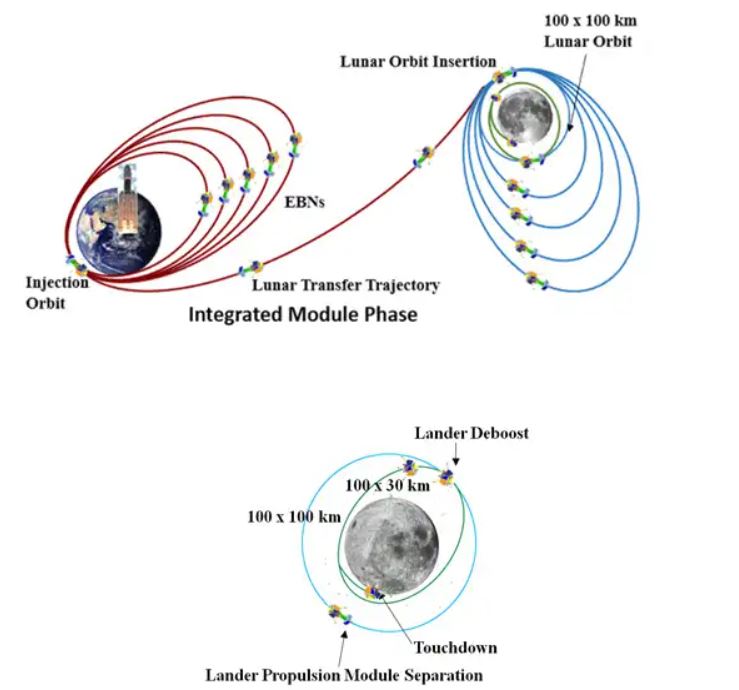
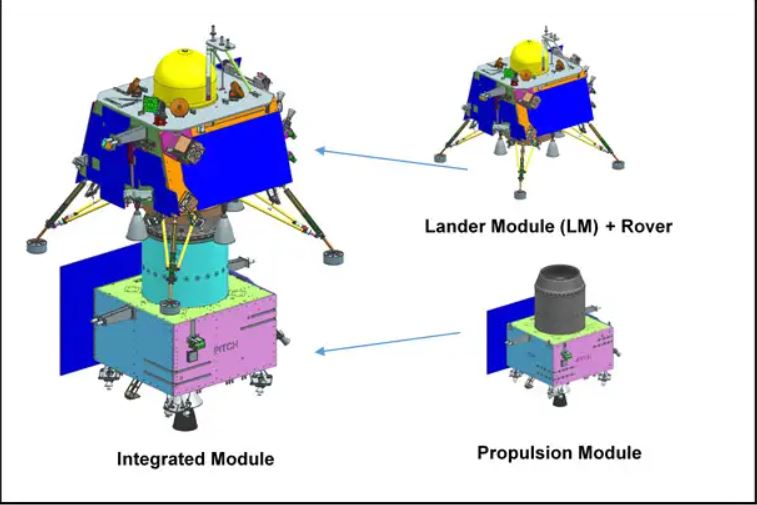
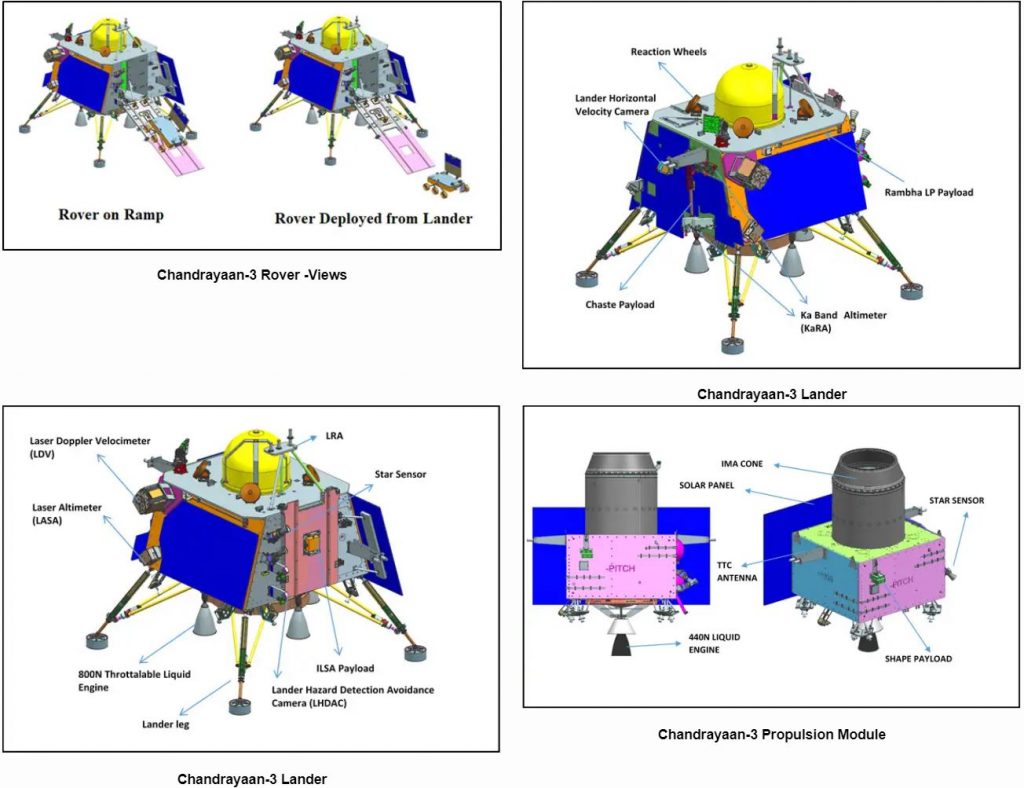
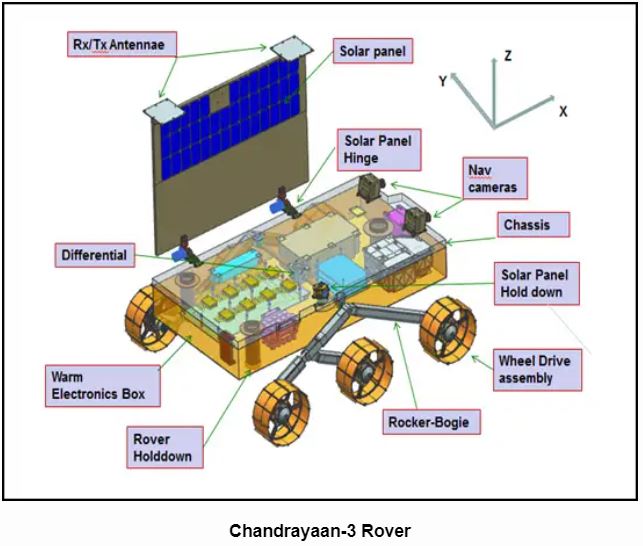
Future Goals
India’s low-budget space program, Chandrayaan-3, has grown significantly since its 2008 lunar landing. The mission cost $74.6 million, significantly lower than many other countries. India’s frugal space engineering is attributed to copying and adapting existing technology and employing skilled engineers.
In 2014, India became the first Asian nation to orbit Mars and plans to send a probe towards the sun in September. ISRO plans a three-day crewed mission into Earth’s orbit by next year, a joint mission with Japan to send another probe to the Moon by 2025, and an orbital mission to Venus within two years.
What is Skinwalker Ranch, and What’s Really Going on There?
Utah’s Skinwalker Ranch, located in the Uinta Basin, is a unique and mysterious place with a rich history of UFOs and extraterrestrial beings. Despite the numerous stories, no hard evidence has been released to confirm the true nature of the phenomenon. The property has been the subject of several books and a History Channel show. The mystery of the ranch’s origins and the numerous stories it has to offer remains a mystery, but it is a fascinating and intriguing place to explore.
History of Skinwalker Ranch
The Utes and the Navajo
The land, traditionally inhabited by the Ute Tribe, is known for its ominous name, “skin-walker.” The term comes from Navajo legend, which describes evil witches who can shapeshift into animals or humans. The Ute tribe’s story involves unleashing skin-walkers upon their enemies during hostility, and these creatures still stalk the land today. Although not well understood outside Navajo culture, this legend inspires scary stories.
The Shermans
The Sherman family, who purchased a ranch in 1994, experienced spooky events during their time there. They encountered a large, unidentified wolf in their yard, which they shot multiple times but did not damage. The wolf eventually disappeared, and the Shermans reported seeing flashing lights, mysterious objects in the sky, circles in their fields, and voices floating overhead. The family decided to sell the ranch in 1996, just two years after they bought it, as they believed the idea of shapeshifting witches in the Uinta Basin was not a plausible explanation. The Shermans’ experiences at the ranch were not limited to a single incident, but they were a testament to the spooky nature of the area.
Robert Bigelow and NIDSci
Robert Bigelow, founder of the National Institute for Discovery Science, bought Skinwalker Ranch in 1996, a haunted ranch that was later turned into a research hub for NIDSci. Skeptics argue that most evidence for paranormal activity on the ranch comes from the Shermans, who sold the ranch to a millionaire known for his interest in UFO research. However, the Shermans didn’t milk Bigelow for all he was worth, selling the ranch for around $200,000, an average price for a home at the time.
NIDSci researchers shared stories of mysterious creatures with otherworldly eyes and cattle mutilations, including one that occurred in broad daylight. Their lack of evidence could serve as evidence itself, as their expensive audio and visual equipment failed to capture what several eyewitnesses had clearly seen. NIDSci disbanded in 2004, but maintained ownership of the property until 2016. When Skinwalker finally changed hands, it was passed off to a group that would experience similar anomalies and frustrations as NIDSci.
Brandon Fugal and the History Channel
In 2016, Bigelow sold Skinwalker Ranch to Brandon Fugal, a Utah real estate mogul, who remained anonymous for four years. In 2020, the History Channel recorded a reality TV show on the property, titled “The Secret of Skinwalker Ranch.” The show follows Fugal’s attempts to bring scientific approaches to the ranch’s mysteries, surrounded by a team of experts and a grown man named Dragon. The current occupants of Skinwalker Ranch have found more questions than answers, such as why electronic equipment malfunctions, unexplained illnesses, and the strangeness they feel on the ranch.
Other Local Tales
Skinwalker Ranch residents share a strong belief that their experiences are real, with hundreds of reports of UFOs and unexplained phenomena since the 1950s. They report seeing bright lights in the sky, often resembling a doorway or portal, and giant flying objects. Some neighbors have also reported seeing cows struck by lightning without scorched earth. One group reported moving their car without tire tracks in the desert sand, while another group had to get coffee for Dragon every day. These experiences highlight the skepticism and belief in the supernatural in the Uinta Basin.
What’s Really Going On?
Theory #1: People are deceiving to Get Money
Robert Sheaffer, a skeptic, believes the Skinwalker phenomenon to be illusory, as no proof has been found after years of monitoring and previous owners claim no supernatural events have occurred. Sheaffer suggests the Sherman family invented the story before selling it to Bigelow, with many extraordinary claims coming from Terry Sherman. In 1996, Bigelow was awarded a Pigasus Award for supporting supernatural investigations. Ufologist Barry Greenwood criticized the $22 million research program led by James Lacatski in 2023, citing the lack of documentary evidence and Skinwalker’s business of selling belief and hope.
Theory #2: Extraterrestrial Visitors
The popular theory about Skinwalker anomalies, including bright lights, flying objects, strange voices, electrical disturbances, and cattle mutilation, suggests that our flying friends may be secretive, possibly filming a docuseries.
Theory #3: Interdimensional Visitors
The “Marvel Cinematic Universe” theory suggests that UFOs originated from a parallel dimension or universe, causing the lights in the sky to appear like portals. This theory, which is similar to Theory #2, could explain the anomalies in the vicinity.
Theory #4: Geophysical Processes Causing the Brain to Hallucinate
Neuroscientist Michael Persinger’s theory suggests that geophysical forces, such as tectonic shifts and seismic activity, can affect the brain responsible for hallucinations. This theory suggests that people’s experiences at Skinwalker are due to increased seismic activity, leading to shapeshifters, UFOs, and portals. Despite being out-of-the-box, this theory is the most likely explanation for these phenomena.
Can You Visit Skinwalker Ranch?
Skinwalker Ranch, located on private property, requires invitations from the owners and is a tough UFO-spotting destination. A nearby campground offers UFO-themed ATV tours, while state parks in Uinta Basin like Steinaker, Starvation Reservoir, and Red Fleet State Parks offer UFO-spotting opportunities. While no promises are made about flying saucers or mysterious lights, visitors can enjoy stunning scenery, friendly locals, and a breathtaking star blanket.
Where is Skinwalker Ranch?
An Overview of Drones and their Applications
Drones are becoming more reliable, faster, accurate, and stable, with industries developing platforms for commercial use. Autonomous capabilities offer opportunities for rescue, emergency supplies, and combat operations.
What is a drone?
Drones, also known as unmanned aerial vehicles (UAVs), are flying robots controlled remotely or autonomously using software-controlled flight plans. Initially used for military purposes, they now serve civilian roles such as intelligence gathering, anti-aircraft target practice, and weapons platforms. They work with onboard sensors and GPS.
Drones are now also used in a range of civilian roles, including the following:
- search and rescue
- surveillance
- traffic monitoring
- weather monitoring
- firefighting
- personal use
- drone-based photography
- videography
- agriculture
- delivery services
What is Drone Technology?
A drone is a flying robot that can be operated manually or autonomously using sensors. They have four rotors, usually a quadcopter design, which generate thrust against Earth’s gravitational force. If the thrust equals the drone’s weight, it hovers, and if it’s higher or lower than the force, it climbs or descends in the air.

The thrust generated by the propellers is given by:

where D (m) is the diameter of the propeller, ρ (Kg/m3) is the density of air (1.225 kg/ m3), v(m/s) is the velocity of air at the propeller, and Δν (m/s) is the velocity of air accelerated by the propeller.
The thrust generated is vertically opposite to the direction of gravity and thus, the drone’s height can only ascend or descend in place unless it has a component of generated thrust in other directions as well. One set of diametrically opposite rotors rotates clockwise, while the other set rotates counter-clockwise. If they have the same rotational speeds, both sets cancel out the reactive yaw generated, and thus, the drone can only translate. By varying the speed of rotation of the propellers, the drone’s pitch and roll can be controlled.
Note: To move ahead in a particular direction, the drone needs to have its nose down such that the thrust has a component in the horizontal plane (see figure below).
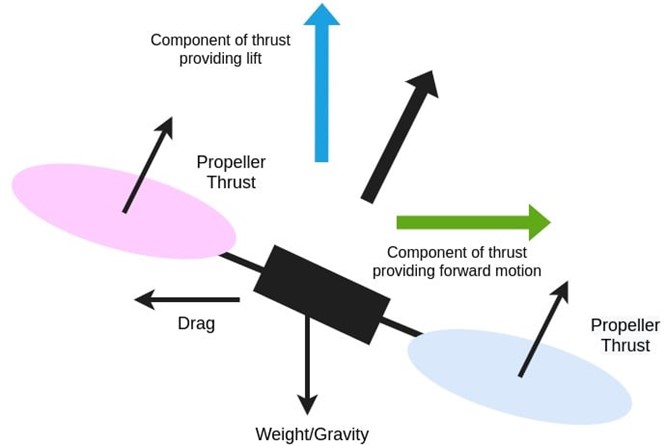
Physics Behind Drone Motion
A drone’s motion is influenced by the rotation of its propellers and the thrust generated against gravity and in the horizontal plane.
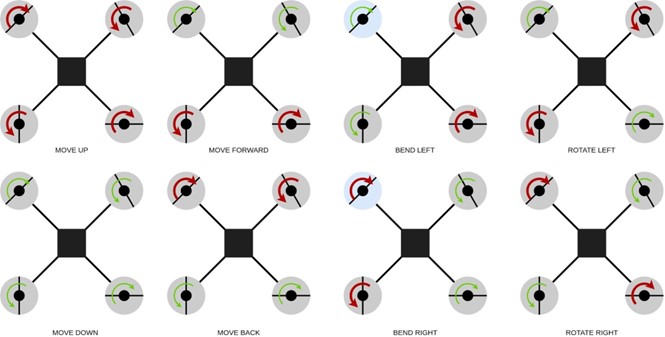
The scenarios for drone motion are:
- If all propellers rotate fast, the drone rises up against the gravity and vice versa
- If the rear propellers rotate faster, the nose pitches down and the drone generates a component of thrust in the forward direction for the forward motion of the drone and vice-versa
- If the right side propellers rotate faster, they generate thrust for roll control, allowing the drone to move to the left and vice-versa
- If the right diagonal propellers rotate faster, they generate yaw force due to a reactive force that obtains yaw control, allowing the drone to rotate left and vice-versa
How It’s Made
Since drones generate a lot of thrust to battle strong winds, air resistance, and particles in the air, they need a strong body. They also need to absorb vibrations while being lightweight to reduce the load the drone body needs to lift against the gravitational force. Lightweight drones are also more agile and can react faster due to less inertia.

Most commercial drones have a lightweight carbon fiber body with a honeycomb design for the limbs that hold the rotors. The brushless motors on these drones can rotate at more than 10000 RPM and generate enough thrust to lift up the body weight. The embedded control unit, usually a microcontroller with multiple sensors, is mounted on top of the drone while the battery is placed below the controller. The battery is usually the drone’s heaviest component.
What Electronics Are in a Drone?
The most important components on a drone include a microcontroller board that runs the computations for the control of the motors, the motor speed control components, sensors for various measurements, and the drone’s lifeline, the battery.
A flight controller for a drone is a common microcontroller, but usually with high processing speed and a bare minimum of sensors onboard, needed for stabilizations. The most common commercially available flight controllers for drones are PixHawk 4, Navio2, and Beaglebone Blue capable of running the ArduPilot and PX4 autopilot software.
A 3D gyroscope is usually needed to at least have the ability to automatically stabilize the drone on a horizontal plane.
The sensor suite of a drone can include:
- Gyroscope: provides the angular velocity of the drone and thus its orientation in the 3D world
- Accelerometer: measures the linear acceleration but mainly used to know the direction of gravity
- Magnetometer: detects the Earth’s magnetic field and obtains the drone’s compass direction
- Barometer: detects the pressure and indirectly computes the height of the drone
- GPS: obtains the coordinates (latitude and longitude) of the drone using multiple satellites
A drone also needs communication with the ground station, satellites, and networking. These components include:
- Radio control transceiver, usually with four channels for height, pitch, roll, and yaw.
- Bluetooth for local debugging and controller access
- Wi-Fi/Internet for onboard connectivity with the ground station to relay real-time sensing information
The most critical component, the battery, is usually a high current source with different voltage ratings from 7.4V to ~22V depending on the type of motor used.
Drones use four propellers to move in a 3D world, with control and perception algorithms playing crucial roles. Control algorithms determine the propeller rotational speed, using a linear PID controller. Adaptive control handles unpredictable winds and atmospheric objects. Perception algorithms process sensors like accelerometer, gyroscope, and magnetometer to determine motion characteristics. Kalman filters filter sensor readings for stable results. Image processing algorithms may also run on the live camera feed for real-time analysis onboard the drone or via cloud computing. Autonomous drone navigation is a growing technological advancement that aims to eliminate the need for teleoperation in drones. Similar to commercial airplanes, autonomous drones in 3D space face less challenges due to the absence of dynamic objects at high altitudes. However, they still require intelligent sensing near ground level due to more obstacles and dynamic objects. Autonomous drones run localization, motion planning, mapping, and control algorithms similar to mobile robots. However, 3D navigation introduces its own variables, such as tolerance for inaccuracies due to noise, lower GPS accuracy, and air turbulence. Autonomous drones don’t need a large occupancy grid, but simple search algorithms like A* or Djikstra can navigate along streets or follow a projectile path.

Challenges and Future of Autonomous Drones
Autonomous drones face challenges in implementing and sustaining their capabilities due to battery power limitations, lack of quick ROI (return on investment), and insufficient control mechanisms. They struggle to handle dynamic situations without manual intervention or active weather perception, and remote communication with cloud infrastructure is challenging due to weaker mobile networks and high latency satellite communication. Despite their potential, these limitations limit commercial scalability and revenue generation. Enhancements in edge computing and control algorithms could improve autonomous drone control, but regulations and infrastructure development are necessary for large-scale commercial viability. Despite these challenges, autonomous drones have potential lifesavers in critical situations like emergency package delivery.
The Best Military Drones In The World In 2023
There are various types of drones used by armed forces, categorized into four categories: microdrones, small tactical drones, medium-sized reconnaissance drones, and large combat and surveillance drones. Microdrones, such as the Black Hornet, are used for spying over walls in Afghanistan. Small tactical drones, like the Fulmar X, are used for ISTAR (Intelligence, Surveillance, Target Acquisition, and Reconnaissance) capabilities. Medium-sized reconnaissance drones, also known as Medium Altitude Long Endurance (MALE) or High-Altitude Long Endurance (HALE) drones, are used for ISTAR and have a range of about 100 kilometers. The Northrop Grumman Global Hawk, the largest and most expensive combat and surveillance drone, has sophisticated ISTAR capabilities and flies at altitudes above commercial air traffic. Below are reported some of the most advanced drones in 2023.
#1 – MQ-9 Reaper:
The General Atomics MQ-9 Reaper is a US Air Force UAV used for offensive strikes, capable of both remotely controlled and autonomous flight operations. It operates with a ground control station and a US-based crew. The UAV is powered by a Honeywell TPE331-10GD turboprop engine producing a maximum of 900 shaft horsepower, giving it a cruise speed of about 230 mph (200 knots). The drone can carry 602 gallons of fuel and has a range of 1,150 miles. It can loiter at its flight ceiling of 50,000 feet for more than 27 hours conducting surveillance using sophisticated cameras, sensors, and radar. The Reaper can carry a payload of 3,750 pounds consisting of a variety of attack weapons.The Air Force Special Operations Command highlights its unique capability to perform strike, coordination, and reconnaissance against high-value, fleeting, and time-sensitive targets due to its significant loiter time, wide-range sensors, and precision weapons.
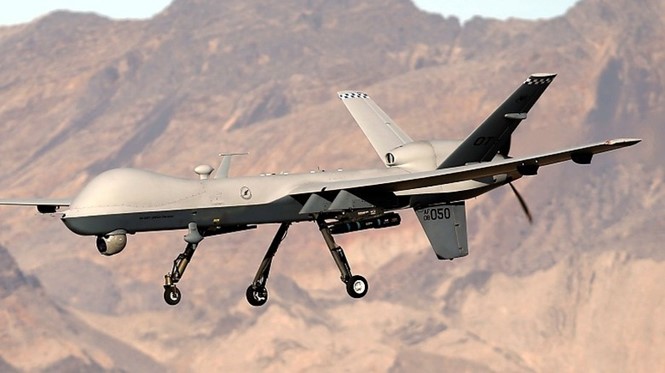
Height: 12.5 feet
Wingspan: 66 feet
Weighs (empty): 4,900 pounds
Cruise speed: 230 mph (200 knots)
Range: 1,150 miles
Max Operating Altitude: 50,000 feet
Payload: 3,750 pounds
#2 – B.A.E. Systems Taranis (Under Development)
Taranis is a large-scale unmanned combat aerial vehicle (UCAV) designed to demonstrate ISTAR capabilities, including sustained surveillance, target marking, intelligence gathering, adversary deterrence, and hostile territory strikes. It features pre-programmed waypoint tracking, takeoff, and landing procedures, and AI features for objective modification. The British Ministry of Defence (MOD) unveiled the fully developed Taranis UCAV prototype in 2010, followed by high-speed taxi tests in 2013. The first test flight was conducted in August 2013, and in-flight footage was released in July 2014. The UCAV, built with a 9.1-meter wingspan, 11.35-meter barrel length, and a height of 4 meters, weighs 8,000 kg and is powered by a Rolls Royce Adour Mk. 951 turbofan engine. It has two internal weapons bays and an option for installing electro-optical and radar sensors.
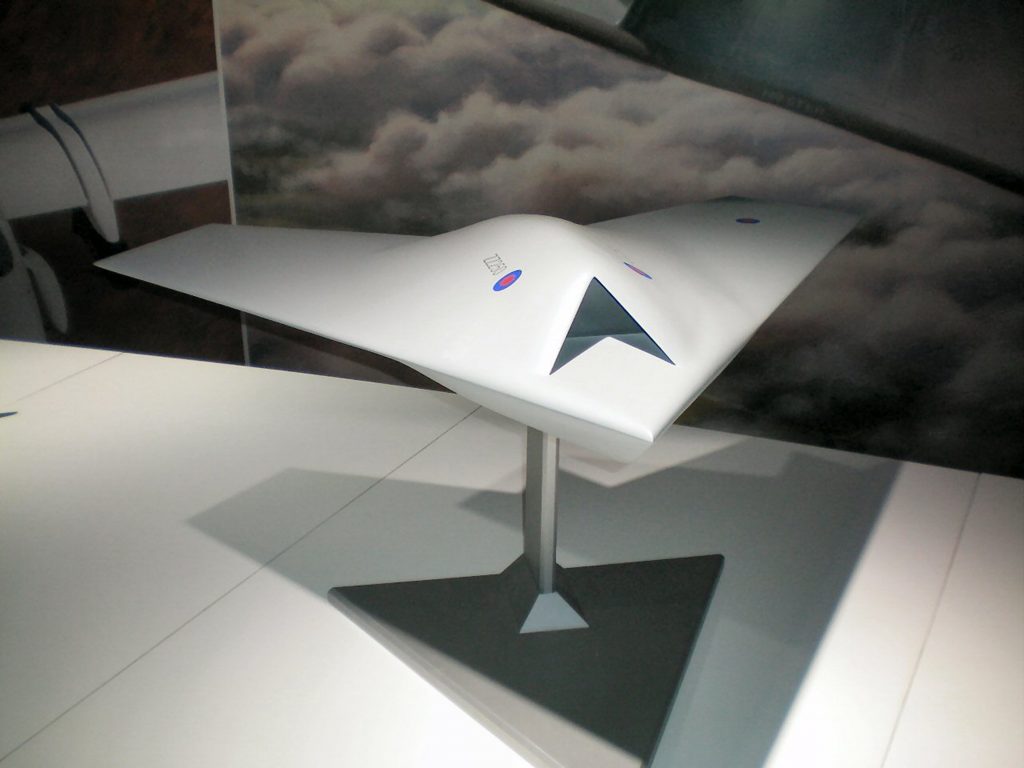
Height: 13.12 feet
Wingspan: 30 feet
Weighs (empty): 17,637 pounds
Cruise speed: Mach >1
Range: Not available
Max Operating Altitude: Not available
Payload: Not available
#3 – Bayraktar Kizilema
Baykar, a Turkish company, has developed the Bayraktar Kizilelma Fighter, an advanced unmanned aerial vehicle (UAV) with stealthy design and advanced maneuvering capabilities. The drone, powered by a Ukrainian Al-25T turbofan, can reach a cruise speed of 0.6 Mach and 500 nautical miles, and can stay airborne for five hours. It features low radar cross section, high situational awareness, and autonomous takeoff and landing. Baykar plans to develop two supersonic models using the Ukrainian Ivchenko-Progress AI-322 afterburning engines. The Kizilelma completed its inaugural flight in December 2022, and is slated for duty aboard the TCG Anadolu amphibious assault ship. Both the U.S.-built Kratos XQ-58 Valkyrie drone and Russia’s Sukhoi S-70 Okhotnik are currently in development with similar features.
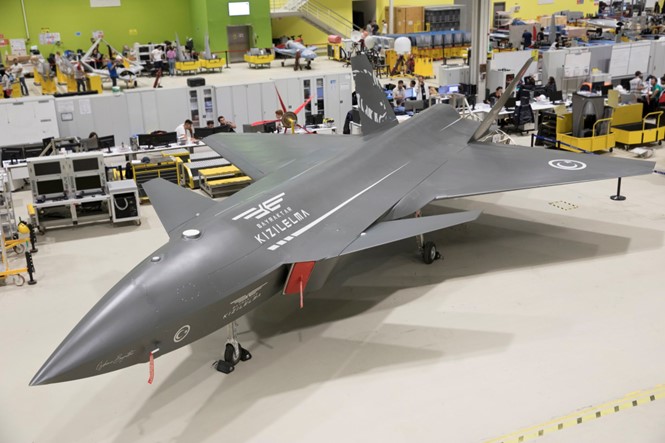
Height: 10 ft 10 in
Wingspan: 32 ft 10 in
Weighs: 8.5 tons including 1.5 tons of ordnance
Max speed: 0.9 Mach
Range: 500 nautical miles
Max Operating Altitude: 30,000 feet
Pentagon has received “several hundreds” of new reports of UFOs
The truth is out there
The Pentagon has received several hundreds of new reports of unidentified flying objects, but no evidence of alien life has been found so far. The All-domain Anomaly Resolution Office (AARO) was established in July to track unidentified objects in the sky, underwater, or in space, or potentially an object that can move between domains. Between 2004 and 2021, US intelligence agencies reported 144 such encounters, with 80 captured on multiple sensors. Since then, there has been more reporting, with an updated report expected by the end of the year.
The new office was established to examine the question of extraterrestrial life and to address the security risk posed by encounters with unknown flying objects by military installations or aircraft. Congress held its first hearing in over half a century on the topic, expressing concern that the objects could create a security risk. The office is working on improving its ability to identify unknown objects, such as recalibrating sensors focused on known adversary aircraft or drone signatures. The new office is coordinating with the Pentagon and the US intelligence community to get the signatures of US technology to rule out those aircraft or drones.
The Pentagon’s investigation covers incidents reported since 1996, but language in the new defense spending bill would extend that 75 years into the past.
The name has been changed from Unidentified Aerial Phenomena to All Domain Anomaly to account for the fact that some of the investigations deal with unexplained sightings underwater, on the surface and in space, although most of the reports still deal with aerial phenomena.
The AARO was set up in July and is responsible for not only tracking unidentified objects in the sky, but also underwater or in space — or potentially an object that has the ability to move from one domain to the next.
The office was established following more than a year of attention on unidentified flying objects that military pilots have observed but have sometimes been reluctant to report due to fear of stigma.
In June 2021 the Office of the Director of National Intelligence reported that between 2004 and 2021, there were 144 such encounters, 80 of which were captured on multiple sensors.
Since then, “we’ve had lots more reporting,” said anomaly office director Sean Kirkpatrick.
Musk’s Neuralink is now approved for human trials
Neuralink, a neurotechnology company founded by Elon Musk in 2016, has achieved a milestone by receiving FDA approval to begin human trials. However, there are still issues that need to be addressed before the technology can be used in clinical trials.
Neuralink is making a Class III medical device called a brain-computer interface (BCI) that connects the brain to an external computer via a Bluetooth signal. The device is implanted within a small disk-shaped cutout in the skull using a precision surgical robot, which splices thousands of tiny threads from the Link to certain neurons in the brain. Each thread is about a quarter the diameter of a human hair.
Potential benefits
Neuralink’s BCI could revolutionize treatment for conditions such as Parkinson’s disease, epilepsy, and spinal cord injuries. It could also be used to treat obesity, autism, depression, schizophrenia, and tinnitus. Other neurotechnology companies and researchers have already developed BCI technologies that have helped people with limited mobility regain movement and complete daily tasks.
The long road to approval for human trials
Neuralink announced in February 2021 that it was working with the FDA to secure permission to start initial human trials. In March 2022, Neuralink made a further application to the FDA to establish its readiness to begin human trials. On 25 May 2023, Neuralink finally received FDA approval for its first human clinical trial. This approval comes less than six months after the US Office of the Inspector General launched an investigation into Neuralink over potential animal welfare violations. The FDA had a list of issues that needed to be resolved before human trials could commence, most of which called for Neuralink to perform thorough and repeated testing and data collection over an extended period. It can be said with certainty that all of the issues have been fully resolved, but considering the rigor of the FDA’s approval process, we might conclude they have been resolved to a point of satisfaction for the FDA.
Risks
A precision robot known as Implant/r1 performs the surgical procedure to implant the Neuralink BCI. This robot surgeon had to be put through its paces to gather evidence that it could reliably and safely implant and remove the Neuralink BCI without damaging surrounding brain tissue or creating the risk of infection, bleeding, inflammation, or scarring. Once implanted, the Neuralink BCI must function as intended and not cause unwanted side effects such as seizures, headaches, mood changes, or cognitive impairment. Overheating lithium-ion batteries can pose a great risk to BCI users. The longevity of the battery was also taken into account, as well as how easy it would be to safely replace from its position under the skin behind the ear. Additionally, there is the risk of wire migration, as the Link consists of a disk-shaped chip with very thin wire electrodes that connect to neurons in the brain.
The companies racing to make a hypersonic aircraft
Hypersonic commercial flight is an ambitious goal, but companies are developing the technologies needed to propel passengers to Mach 5 and beyond. Hypersonic aviation companies have long, sleek aircraft designs, ideas, and ambitious R&D programs.
Companies such as Hermeus and Stratolaunch in the US and Australia-based Hypersonix are leading hypersonic aircraft development.
Hermeus’ Quarterhorse is expected to fly next year and will be capable of Mach 4+. It is being developed primarily to test Hermeus’ Chimera turbine-based combined cycle engine, which it intends to use in its future hypersonic aircraft.
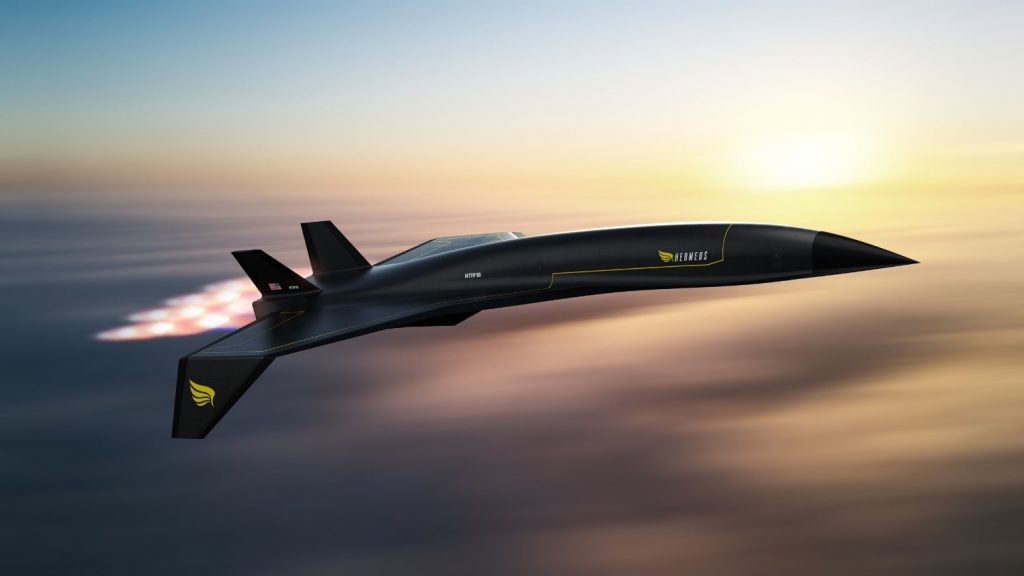
Stratolaunch’s Mach 6+ Talon-A is expected to fly before the end of this year and will be the first fully hypersonic-capable vehicle with an integrated propulsion system, a liquid-fuelled rocket engine. It will be air-launched from the company’s Roc carrier aircraft, which is the world’s largest aircraft with a wingspan of 385ft (120m).
Crucially, Talon-A will be reusable. Current flight testing at hypersonic speeds is done with testbeds that crash land. This means only relatively small amounts of data are produced and recovered.
Stratolaunch is agnostic about who they are testing for and is trying to advance the technology for everyone.

Stratolaunch plans to fly Talon-A once every 30 days by the end of the year. The separation test is next, followed by the first expendable launch and landing vehicles. Roc provides flexibility with the size of the pylon, allowing for the best aerodynamic conditions for release. Stratolaunch is a testing services company.
Hypersonix development
Hypersonix is taking steps to develop a space-launch platform and hypersonic aircraft using Australian Government funding. Dr Michael Smart, chief technology officer, director and head of R&D at Hypersonix, lists the major technical challenges facing hypersonic flight as thermal management of the airframe and the development of a way to facilitate horizontal take-off. Hypersonix plans to fly a testbed next year, Dart AE, which will flight test the company’s hydrogen-fueled Spartan scramjet engine for the first time. Rocket Lab is supplying a rocket booster for Dart which will propel it to Mach 5, after which Spartan will ignite to produce speeds of up to Mach 12. Dart will be launched using a guided rocket, although Hypersonix has plans to develop a more complex, re-usable three stage launch system called Wirraway. Hypersonix is already working with Kratos and Smart sees the potential in partnerships with other companies and countries.

(Images: Hypersonix)
Partnership Plan
Reaction Engines is a hypersonic R&D company founded in 1989 to develop a spaceplane. President Adam Dissel heads up the business in the USA and is pragmatic about the challenge of developing a hypersonic aircraft. Reaction works with BAE Systems, Rolls-Royce, the UK’s MOD and the US Air Force (USAF). The partnerships have requirements that must be fulfilled and pragmatic near-term targets. In January, Reaction successfully completed a ground testing campaign in Colorado with the USAF to demonstrate the suitability of its precooler technology to boost the performance of current generation fighter jet engines. The precooler test item allows current jets to fly at a much higher speed without a brand new engine.
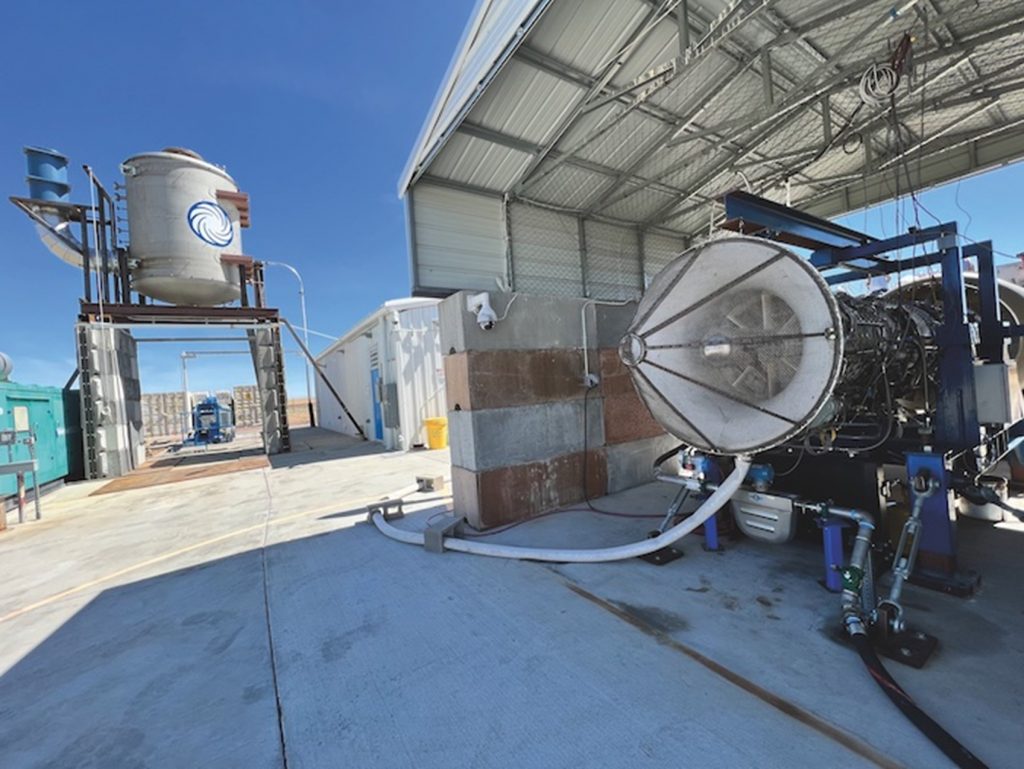

Dissel believes that hypersonic aircraft propulsion systems based on rocket engine technology will be complex, difficult to maintain, and have low lifetimes. Reaction is working in the UK on the HVX program, which aims to develop hypersonic technologies including air-breathing propulsion engines, thermal management systems, and advanced vehicle concepts. As part of the program, Reaction’s precooler technology is being combined with a subscale jet engine for ground testing and then scaled up to engine sizes large enough for use in aircraft. Dissel is excited about the high-speed market, believing that there are commercial and defense angles and that it is a partnership approach with other companies and different governments and countries to make it real.
Destinus Project (Europe)
Destinus, a European company founded in 2021, has grown to 80 people and has offices in Switzerland, Toulouse and Paris. It plans to build two hypersonic aircraft, one transoceanic and one transglobal, both hydrogen-fueled and flying at altitudes of 30-40km. It is conducting flight testing using subsonic prototypes and ramping up quickly towards flying a supersonic prototype next year. The thermal management system is a patented concept that uses pipes carrying hydrogen to reduce temperature at the hot surfaces of the aircraft. The company is also developing hydrogen afterburners and an autopilot system and is doing research on the vehicle design.


Destinus’ technology to-do list for a hypersonic aircraft includes thermal management and a propulsion system that can enable horizontal take-offs and landings. The decision to use hydrogen fuel was made early on due to environmental and design considerations. Hydrogen is lightweight and more efficient than Jet A fuel at speeds above Mach 3 and ranges of more than 3,000km.
Destinus is an ambitious testing program that will burn through money as fast as it combusts hydrogen. The company is seeking funding support from governments in the form of joint R&D programs. Destinus plans to sell access to its test facilities to other companies as and when they become available. The company is also looking at the possibility of developing hypersonic-capable unmanned vehicles that could be used for R&D and defense applications as a revenue source. Lofqvist (senior business development director) believes there is strong support for Destinus in Europe and believes market demand will exist for hypersonic passenger flights in the future.
Non-technical challenges are not driving design or development at the present moment, but most hypersonic companies are addressing innovating within thermal management and propulsion first. There is a growing awareness that surmounting the barriers to hypersonic flight will require the pooling of resources and knowledge between companies and countries.
Hypersonic propulsion is challenging
The most important details in this text are the development of a reusable, reliable engine capable of propelling aircraft to hypersonic speeds. The most successful hypersonic manned aircraft is the USA’s X-15 (it was air-launched and used rocket engines in the 1950s and 1960s), which achieved a speed of Mach 3.7. The fastest air-breathing manned aircraft is the SR71 Blackbird spy plane, which was powered by two Pratt & Whitney J58 axial flow turbojet engines and was capable of Mach 3.2. The SR71’s J58 engine is often called a turbo ramjet. Ramjets use the forward motion of the engine during flight to compress incoming air instead of a rotary compressor. They can only be used at speeds above Mach 2. The scramjet (supersonic combustion ramjet) is designed for speeds above Mach 6, but no flight tests have surpassed Mach 9.6. Companies are pursuing several propulsion technologies, but crucial to hypersonic flights is the development of a capability to power an aircraft through the lower atmosphere using conventional jet engine technology before switching to a ramjet system for hypersonic speeds.
Venus Aerospace is developing hypersonic drones and passenger aircraft.
Velontra is building an unmanned spaceplane that uses a jet engine and airbreathing propulsion.
Radian Aerospace is launching a delta-winged spaceplane Radian One that will be launched from a rocket-powered sled and used to orbit for manned missions of up to five days before returning to Earth.
AI co-pilots are ready to be used on general aviation aircraft
Avionics systems using artificial intelligence are being developed for eVTOL aircraft, but general aviation piston aircraft will be the first users. Avidyne and Daedalean formed a partnership to develop the PilotEye system in 2020. Avidyne is aiming to gain FAA certification for the system this year with concurrent validation by EASA. Schwinn (President and founder of avionics company Avidyne) expects to have finalized systems by the middle of the year. Development, validation and certification activities are ongoing in the STC program (Supplemental Type Certificate program underway at FAA and EASA).
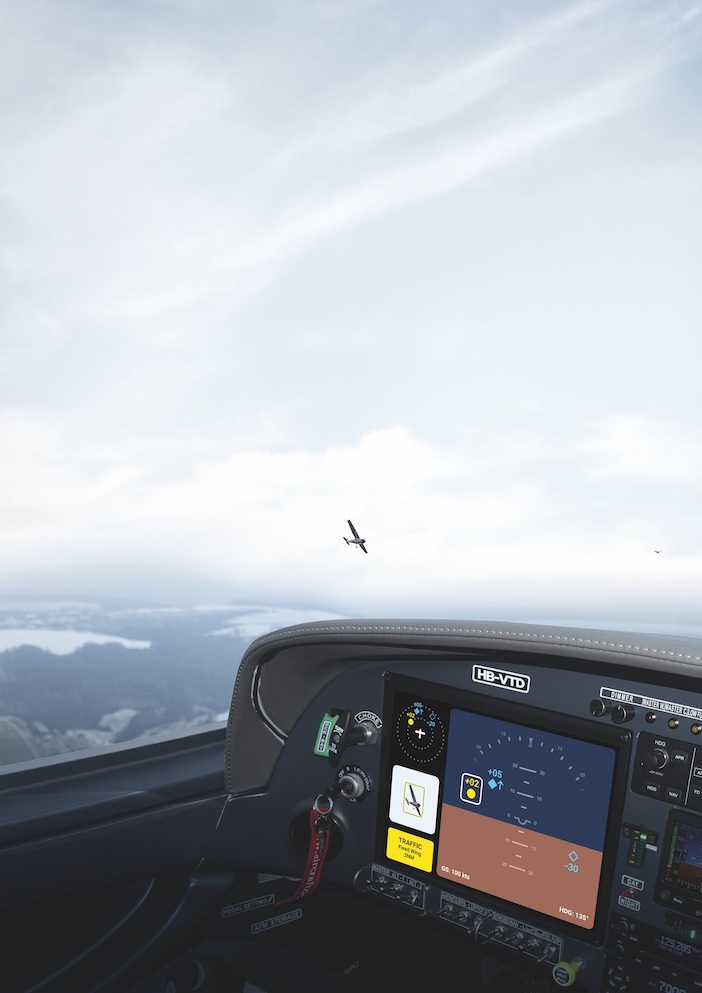
Visual acquisition
Avidyne was founded 27 years ago to bring big glass cockpit displays to general aviation cockpits. PilotEye functions will integrate with any standards-based traffic display, allowing the pilot to use an iPad to zoom in on traffic. There will be enhanced features when installed with Avidyne displays.
PilotEye is a system that can detect aircraft, drones, and obstacles. PilotEye can detect a Cessna 172 at 2 miles (3.2km) and a Group 1 drone (20 lbs, 9kg). Avidyne installs traditional avionics hardware and Daedalean provides neural network software for flight test programs.
PilotEye is a real-time, critical application that uses neural networks to analyze engine data. Avidyne has flown hundreds of hours of flight tests with PilotEye and done thousands of hours of simulation. The forward-facing camera has a 60˚ field of view and the two side-facing cameras have 80˚ fields of view, producing a 220˚ panorama. The system will have three cameras initially and an optional fourth camera later, which helicopter operators may point down to find helipads or potential emergency landing locations.
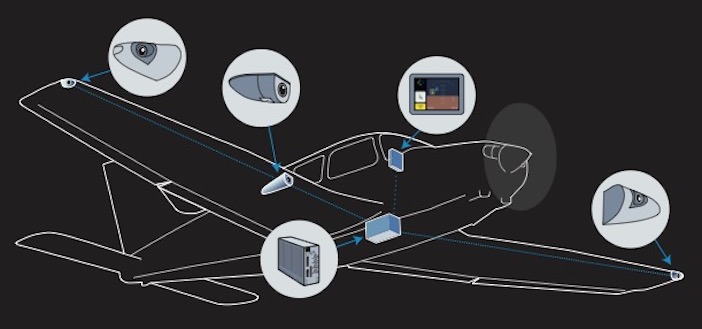
Neural networks
Daedalean has been developing neural network technology for aviation since 2016, mainly as flight control systems for autonomous eVTOL aircraft. It provides an evaluation kit of its computer vision based situational awareness system, along with drawings and documentation, so airframe, avionics companies and large fleet operators can install it on their own flight test aircraft. The two-camera evaluation kit provides visual positioning and navigation, traffic detection and visual landing guidance portrayed on a tablet computer in real time. Installation is not easy and involves more than duct tape to ensure it is safe for flight. End users can buy or rent the evaluation kit or partner with Daedalean long-term in developing advanced situational awareness systems.
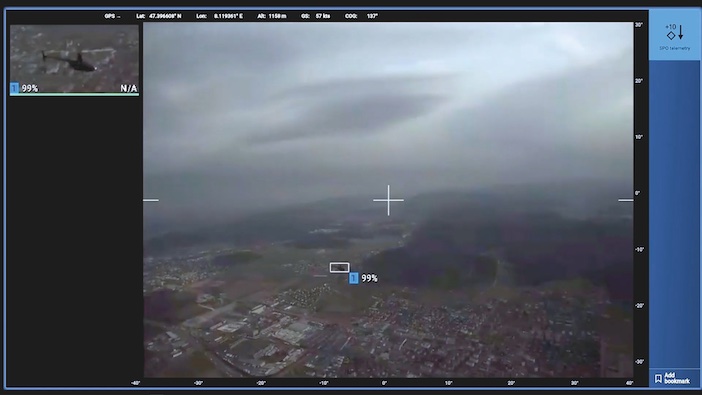
Daedalean is developing a Level 1 AI/Machine learning system to assess the performance of computer vision technology in real world scenarios. The equipment is a Level 1 AI/Machine learning system, which provides human assistance, Level 2 is for human/machine collaboration and Level 3 is a machine able to perform decisions and actions fully independently. Daedalean has collected 500 hours of flight test video recordings in rented GA aircraft and helicopters for its situational awareness system, and has gathered 1.2 million still images taken during 7,000 encounters between the data gathering aircraft and another aircraft providing the target. The code is then frozen and released to partners using Daedalean evaluation kits, and feedback from these users guides the next release. The aim is to eventually have the system interfaced with flight controls to avoid hazards such as obstacles and terrain, and to communicate with air traffic control and other Daedalean equipped aircraft.
Certification Procedure
Daedalean is working with regulators to develop an engineering process to be applied to AI and machine learning avionics during certification. The standard software development process follows a V-shaped method which confirms software conforms to requirements, standards and procedures. EASA and Daedalean have created a W-shaped process to guide certification efforts, with the middle of the W used to verify the learning process and ensure that the learning technique is correctly applied. The FAA has also evaluated whether visual-based AI landing assistance would backup other navigation systems during a GPS outage. Avionics supplier Honeywell has also partnered with Daedalean to develop and test avionics for autonomous takeoff and landing, as well as GPS-independent navigation and collision avoidance.
Honeywell Ventures is an investor in Daedalean. The Swiss company Honeywell has established a US office near Honeywell’s headquarters in Phoenix, USA. The FAA is also involved in working to bring AI and neural network machine learning to general aviation cockpits by funding R&D with US research agency MITRE. Software engineer Matt Pollack has been working on the digital copilot project that began in 2015. Flight testing of the first algorithms began in 2017 with a Cessna 172 and since then a total of 50 flight test hours have been conducted in light aircraft as well as in helicopters. The cognitive assistance provided by the digital co-pilot operates like Apple’s Siri or Amazon’s Alexa voice assistance do on the ground.
It aids a pilot’s cognition without replacing it and is enabled by automatic speech recognition and location awareness. The algorithms provide useful information with audio and visual notifications based on the context of what the pilot is trying to accomplish. The system can also provide a memory prompt.